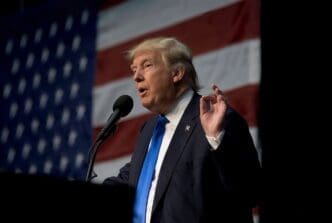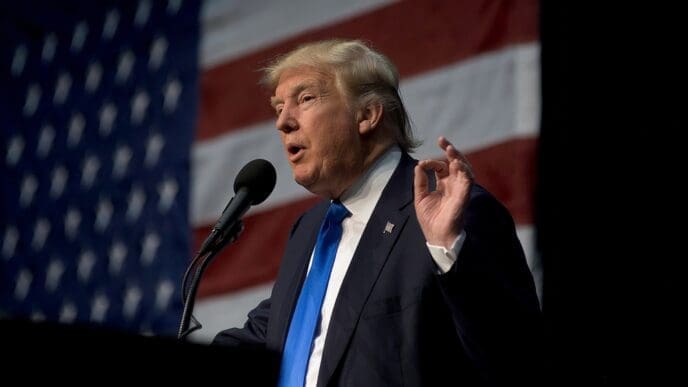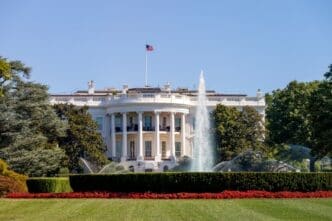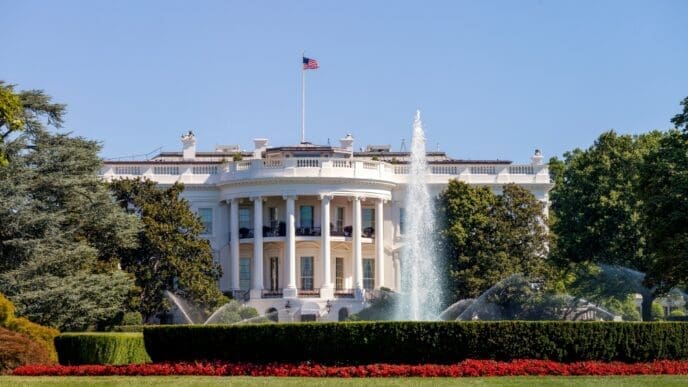Executive Summary
The Story So Far
Why This Matters
Who Thinks What?
Tariffs of 50% on goods from India, imposed by the United States, took effect on Wednesday, as President Donald Trump’s administration seeks to penalize Delhi for its continued purchases of Russian oil and weapons. In response, Indian Prime Minister Narendra Modi has announced significant domestic economic measures, including tax reforms and a renewed push for national self-reliance, aiming to mitigate the economic impact on the country’s export-driven industries. India has described the tariffs as unfair, asserting its right to prioritize its 1.4 billion citizens’ needs for affordable energy, despite the potential disruption to its trade relationship with the U.S.
Tariffs and India’s Response
The new U.S. tariffs, among the highest globally, include a 25% penalty specifically targeting transactions with Russia. These transactions are considered a key source of funding for Russia’s ongoing conflict in Ukraine.
India, a crucial strategic partner for the U.S. in the Indo-Pacific region, has shown no indication of ceasing its Russian oil and weapons purchases. The nation maintains that it will choose the “best deal” for its energy needs to safeguard its population.
Concerns are rising that these tariffs could negatively affect exports and economic growth within India, currently the world’s fifth-largest economy. The United States had recently been India’s largest trading partner, making this development a significant setback.
Modi’s Economic Strategy
Tax Reforms and Self-Reliance
In response to the tariff setback, the Indian government has initiated what it describes as a “firefighting mode.” Prime Minister Modi had previously promised tax cuts to lessen the impact on millions of livelihoods in export-oriented sectors, ranging from textiles to diamonds and shrimp.
During Independence Day celebrations, Modi announced an upcoming “massive tax bonanza” for ordinary citizens and small businesses, coinciding with the Diwali festival. He also encouraged small shop owners to display “Swadeshi” or “Made in India” signs, advocating for economic self-reliance driven by pride rather than desperation.
Modi has reiterated this message multiple times this week, emphasizing both domestic production and consumption. While the government has offered subsidies and production incentives, the share of manufacturing in India’s gross domestic product (GDP) has remained stagnant at 15%.
However, experts suggest that expediting long-pending tax reforms could immediately inject more money into the economy, helping to soften the blow from the tariffs. This approach focuses on boosting internal demand and supporting local industries.
GST Overhaul
Following a $12 billion income tax giveaway announced in the budget earlier this year, Modi is now targeting a comprehensive overhaul of India’s indirect tax system. The proposed reform involves a reduction and simplification of the Goods and Services Tax (GST).
Introduced eight years ago, the GST aimed to streamline a complex web of indirect taxes, reduce compliance burdens, and lower business costs. However, critics argue that its numerous thresholds and exemptions have made the system overly complicated.
India’s finance ministry has now put forth a proposal for a simplified two-tier GST system, addressing long-standing calls for its revamp. This move is expected to simplify tax structures for businesses and consumers.
Analysts from Jeffries, a U.S. brokerage house, project that the combined effect of the income tax cut and the proposed GST rate reforms, estimated at US$20 billion, could significantly boost consumption. Investment banking firm Morgan Stanley also anticipates that this “fiscal stimulus” will support a consumption recovery, potentially increasing GDP and lowering inflation.
Sectors expected to benefit most from these tax breaks include consumer-facing industries such as scooters, small cars, garments, and cement, where demand typically rises around the Diwali period. These measures aim to stimulate domestic spending across various segments of the economy.
While specific details remain undisclosed, most analysts believe that any revenue loss from lower GST rates could be offset by surplus collections from other taxes and higher-than-budgeted dividends from India’s central bank. Swiss investment bank UBS suggests that GST cuts will have a greater “multiplier effect” than previous corporate and income tax reductions, as they directly influence consumer spending at the point of purchase.
Broader Economic and Political Context
Modi’s tax initiatives could also increase the likelihood of further interest rate reductions by India’s central bank, which has already cut rates by 1% in recent months. Analysts suggest this could stimulate lending and economic activity.
Additionally, a salary increase for nearly five million government employees and 6.8 million pensioners, set to commence early next year, is expected to further support India’s economic growth momentum. These combined factors aim to bolster domestic demand and stability.
India’s stock markets have responded positively to these announcements. Despite recent trade uncertainties, S&P Global recently upgraded India’s sovereign rating, the first such upgrade in 18 years, signaling improved confidence in the government’s ability to manage its finances and attract foreign investment.
However, India’s growth prospects have moderated from the 8% levels observed a few years ago, and external economic challenges persist. The diplomatic tensions between Delhi and Washington, particularly concerning India’s energy purchases from Russia, have intensified, leading to the cancellation of planned trade negotiations.
Experts note that the 50% tariffs on India are akin to a trade sanction between the world’s largest and fastest-growing major economies, a scenario that was considered unlikely just a few months prior. This situation underscores the complex interplay of geopolitical and economic factors impacting global trade relations.













